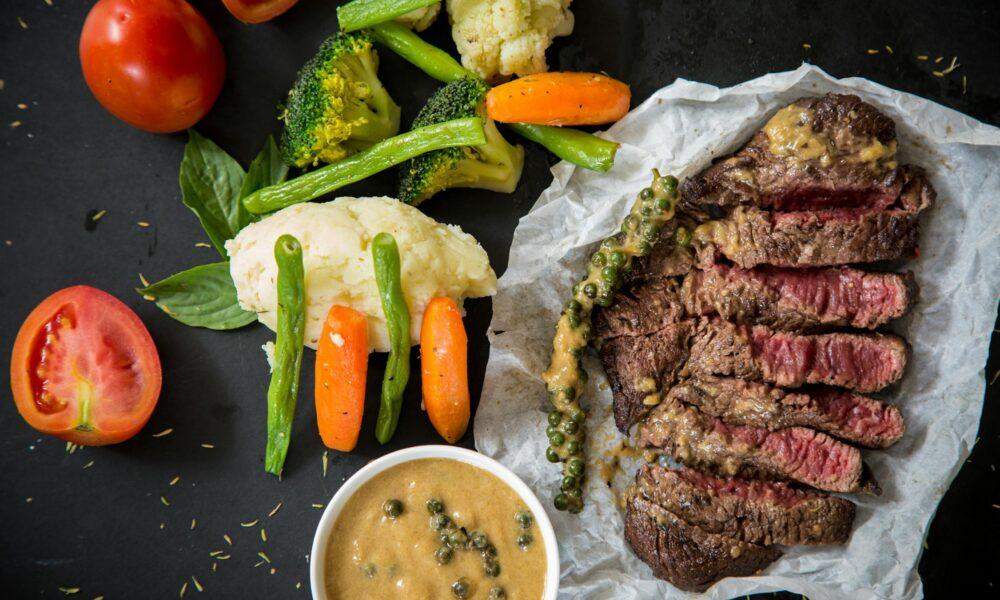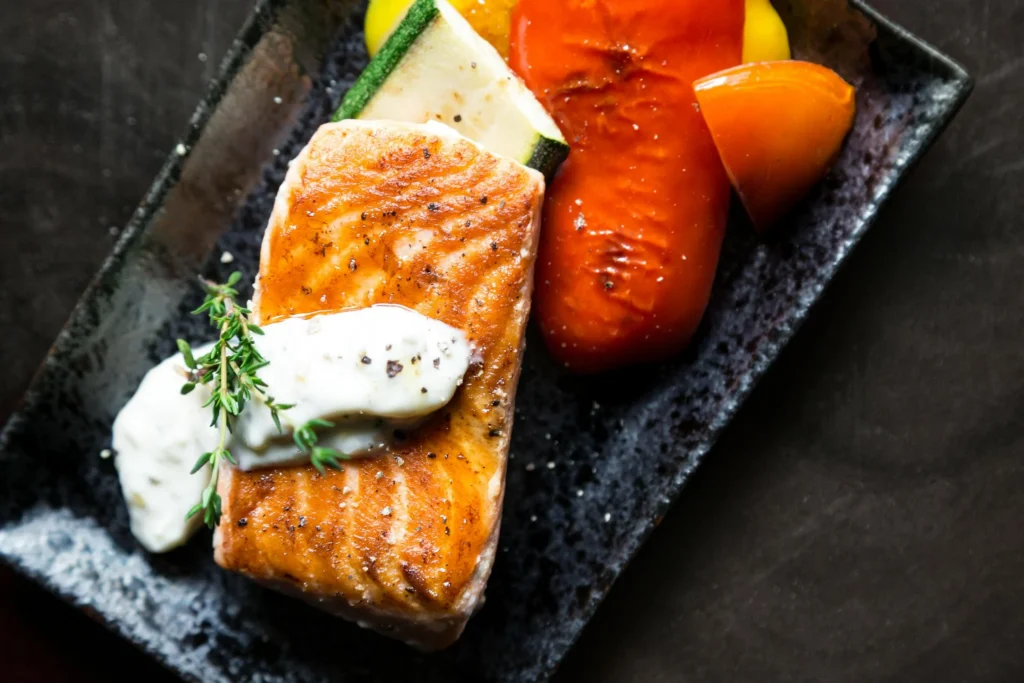
Are you packing your meals with protein, thinking more is always better? You’re not alone.
Protein is a vital nutrient known for supporting muscle growth, strength, and recovery.
Many health-conscious individuals increase their protein intake to build lean mass, manage weight, or improve performance. Protein is praised for boosting satiety, aiding metabolism, and fueling the body efficiently.
However, with the growing popularity of high-protein diets, some weightlifters wonder if too much of a good thing can be harmful. Could excess protein affect your kidneys, digestion, fitness goals or long-term health?
In this article, you’ll discover whether consuming too much protein can harm you and how to strike the right balance for your health and fitness goals.
Protein is one of the vital micronutrients your body requires for optimum bodily function. It is the building block of your body that helps in muscle repair, bone health, muscle growth, organ development, and the making of enzymes and hormones.
Proteins are made up of amino acids produced by your body. However, the amino acids produced are relatively low and can’t help the body function properly. That’s why we consume a protein diet to obtain the essential amino acids such as histidine, tryptophan, lysine, phenylalanine, methionine, leucine, threonine, isoleucine, and valine.
Not all protein sources contain the same amount of protein and amino acid composition. Some, such as lean meat and dairy products, have all nine essential amino acids, while plant-based diets have fewer.
Because of the differences in amounts of protein in protein food, most people, especially in the US, have exceeded their protein requirement. According to the Dietary Guidelines for Americans, from 2020 to 2025, males aged 19-59 exceeded their protein recommendation, specifically from meat and poultry products.
As an athlete, bodybuilder, and fitness enthusiast, you must prioritize high-protein diets to support muscle growth, recovery, and performance.
Below are 10 reasons why you should consume protein.
1. Build Muscle Mass and Strength
Protein is the main element that makes muscles. Like any other body tissue, muscles are constantly breaking down and rebuilding.
Rebuilding muscles requires your body to synthesize more muscle protein than it breaks down. Protein helps build muscle mass and strength by supplying the body with essential amino acids for protein synthesis.
When you perform resistance training, your muscle fibres undergo microtears. Protein works by repairing these tears (providing amino acids), making the muscles thicker and stronger. Without enough protein, your muscles can’t recover properly, and you risk muscle breakdown instead of growth.
A 2018 study indicated that a 1.6 g/kg/day dietary protein supplementation increased strength, muscle mass, and performance after weight lifting training for adults.
2. Helps in Fat Loss and Lean Muscle Maintenance
To lose fat, you need to consume fewer calories than you burn. High-protein food helps burn fat by boosting metabolism through the thermic effect of food. The body burns more calories to produce energy needed to digest protein than carbs or fats.
Additionally, protein promotes satiety, helping reduce cravings and overall calorie intake without feeling deprived, leading to fat or weight loss.
3. Promotes Muscle Growth and Repair
Adequate protein intake can repair muscle after a workout or injury, leading to muscle growth and recovery. Weightlifting causes tears and damage to muscle fibres, and protein provides the amino acids needed to repair and rebuild them. Without enough protein, the body cannot effectively recover, which slows progress and may increase the risk of injury.
Consuming high-quality protein sources around workouts—especially post-training—maximizes muscle protein synthesis, accelerating muscle recovery and growth.
4. Increased Strength and Performance
As a weightlifter, you need strength to perform the required exercises to build muscle and maintain your fitness level. Proteins provide the needed energy for the workout, which directly impacts performance.
High protein intake also helps maintain muscle mass during intense training and ensures quicker recovery between sessions, allowing for consistent performance and fewer setbacks.
A high-protein diet enhances power output, stability, and lifting capacity when combined with structured training and rest. Therefore, you can train harder and more frequently without excessive fatigue.
5. Help Lower High Blood Pressure
Hypertension is not suitable for anyone, let alone a weightlifter. It can cause chronic kidney disease, stroke, or even a heart attack when exercising.
Some amino acids found in protein, especially arginine, help the body produce nitric oxide, a molecule that relaxes and widens blood vessels. This improves blood flow and reduces arterial resistance, lowering blood pressure.
A high-protein diet supports weight loss by increasing satiety and reducing overall calorie intake. Since excess weight is a significant risk factor for high blood pressure, shedding pounds can lead to a natural drop in blood pressure levels. A 2023 study shows that a high-protein diet lowers high blood pressure.
6. Promotes Fitness as You Age
As you age, your muscles slowly weaken, affecting your mobility and strength. This happens mostly in people with age-related sarcopenia, the leading cause of bone fractures and poor quality of life among elderly adults.
Protein reduces gradual muscle deterioration and age-related sarcopenia. Research shows that protein, especially animal protein, is suitable for bone health.
When combined with resistance training, it could help strengthen and maintain bone mass, reducing the risk of bone fracture and frailty and improving fitness.

How Much Protein Should You Consume?
Your protein consumption depends on sex, age, body weight, and activity level.
Men and women generally need similar amounts of protein, but men may consume more due to their typically higher muscle mass and caloric needs.
Based on age, sex, and weight, the National Library of Medicine recommends that an adult get at least 0.8 grams of protein per kilogram of body weight per day. This means a 64-kg adult should consume at least 50 grams of protein daily. A 90 kg adult should consume 70 grams of protein each day.
Here’s a clear breakdown of how much protein you should consume based on activity level, as the International Society of Sports Nutrition recommends.
General Protein Recommendations by Activity Level
| Activity Level | Protein Intake (grams per kg of body weight) |
|---|---|
| Sedentary (minimal activity) | 0.8 g/kg (general RDA) |
| Light to moderate exercise | 1.0–1.6 g/kg |
| Endurance training | 1.2–1.6 g/kg |
| Weightlifting / Bodybuilding | 1.6–2.0 g/kg |
| Cutting (fat loss phase) | 2.2–2.7 g/kg to preserve muscle mass |
Proteins are classified into various groups, but in this case, we will focus on animal-based, plant-based, complete, and incomplete protein types.
Your body needs 20 different amino acids to carry out various body functions. Of these 20, 11 are non-essential and are produced by your body. The remaining nine, which are crucial, we get from protein food.
A complete protein is a food that contains all nine essential amino acids that your body can’t produce. These amino acids are crucial for muscle repair, immune function, and overall health.
Incomplete protein contains some essential amino acids (not all) in various amounts. They lack one or more essential amino acids
Complete and incomplete proteins can be plant-based or animal-based. Plant-based proteins are derived from plants, most of which are incomplete proteins. They include rice, peanuts, wheat, corn, and most legumes (like black beans or lentils)
Animal-based protein comes from animal sources and typically contains all essential amino acids in the proper ratios. Examples of complete animal and plant-based protein are:
- Chicken
- Eggs
- Fish (like salmon or tuna)
- Beef
- Dairy products (milk, yogurt, cheese)
- Quinoa (plant-based)
- Soy products (tofu, edamame)
Ingesting protein is easy and can be done through various foods, drinks, and supplements, depending on your lifestyle and fitness goals. Here are the main ways:
1. Meals: Eat High-Protein Foods
Whole foods are the best and most natural sources of protein. The general recommendation is that 10% to 35% of your daily calories should come from protein, depending on your lifestyle, activity level, and fitness goal. Include a lean protein source in breakfast, lunch, and dinner. Example:
- Breakfast: Eggs, Greek yogurt, or cottage cheese
- Lunch: Grilled chicken salad, tuna sandwich, or lentil soup
- Dinner: Baked salmon, tofu stir-fry, or beef with quinoa
2. Use Protein Supplements
Protein supplements are best for filling nutritional gaps or boosting intake in low-protein diets. Daily, use protein powders (whey, casein, soy, pea, etc.). However, supplements should not entirely replace whole food sources. Examples:
- Whey concentrate
- Soy concentrate
- Whey protein isolate
- Pea protein isolate
- Mix into oatmeal, smoothies, or baked goods
- Use casein protein before bed for slow-release amino acids
3. Protein Shakes and Powders
Protein powders are ideal for post-workout recovery or a quick protein boost. Mix them with water, milk, or plant-based milk in a shaker or blender.
Examples of protein powder and shakes include:
- Plant-based protein shake with almond milk and banana
- Pre-workout smoothie with Greek yogurt and berries
- Plant-based protein powder (pea, rice, soy, hemp)
- Whey protein shake after lifting
- Casein protein
4. Protein Bars
Best for on-the-go snacking or meal replacements. Keep a protein bar in your bag or gym locker to eat between meals. Examples are:
- Protein bars with 15–25g of protein and low sugar
- Plant-based bars made from nuts and pea protein
- Whey-based bars with chocolate or peanut butter flavour.

The upper limit of safe protein intake varies by individual. Still, most research suggests that consuming more than 2.5–3.5 grams of protein per kilogram of body weight per day (or about 1.1–1.6 grams per pound) may be too much for most healthy people, especially over the long term.
If you are an average sedentary adult male or female, stick to at least 0.8 grams of protein per kilogram of body weight. Stick to 1.6–2.2g/kg of body weight per day if you’re an athlete, weightlifter, or pursuing fat loss with muscle maintenance. Exceeding this occasionally is generally fine, but consistently exceeding 3.5g/kg offers no added benefit and may cause health concerns over time.
For most healthy people, high-protein diets are safe in the short term, but long-term overconsumption may cause:
1. Kidney Damage
High protein intake increases the kidneys’ workload because it must excrete more nitrogen, a byproduct of protein metabolism. This straining of the kidneys, especially in people with pre-existing kidney issues, could cause kidney damage.
2. Dehydration
Breaking down protein produces nitrogen waste (urea), which must be flushed out through urine. This increases the need for water and can lead to dehydration if fluid intake isn’t increased alongside protein intake.
3. Digestive Issues
A diet focused on protein, especially without enough fibre, can lead to constipation, bloating, or diarrhoea, particularly from protein powders or processed sources. If total calories are too high, it can also promote unwanted weight gain.
While protein is essential for muscle growth, repair, and overall health, too much can have downsides, especially when consumed over time. Moderate to high protein intake is generally safe and beneficial for healthy individuals. However, extremely high levels may lead to dehydration, digestive issues, and strain on the kidneys, particularly in those with pre-existing conditions.
Focus on meeting your protein needs based on your activity level, weight, and goals, without overloading your body. A well-rounded diet with adequate hydration, fibre, and nutrients ensures you get the benefits of protein without the risks.
!function(f,b,e,v,n,t,s)
{if(f.fbq)return;n=f.fbq=function(){n.callMethod?
n.callMethod.apply(n,arguments):n.queue.push(arguments)};
if(!f._fbq)f._fbq=n;n.push=n;n.loaded=!0;n.version=’2.0′;
n.queue=[];t=b.createElement(e);t.async=!0;
t.src=v;s=b.getElementsByTagName(e)[0];
s.parentNode.insertBefore(t,s)}(window, document,’script’,
‘https://connect.facebook.net/en_US/fbevents.js’);
fbq(‘init’, ‘213596722851044’);
fbq(‘track’, ‘PageView’);
